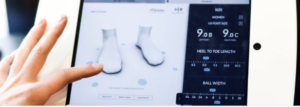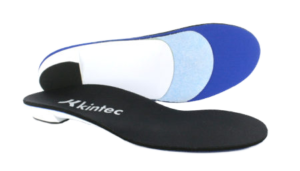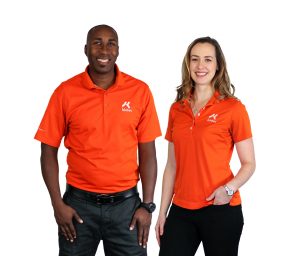Have a Doctor’s Referral?Book now
Do you experience pain and stiffness in the joint at the base of your big toe? If so, you may be suffering from first metatarsophalangeal joint (1st MTP) arthritis.
It’s easy to forget that the big toe is involved in every step that you take, bearing 40% of your body weight while walking! So when this essential joint is affected, it can really throw a wrench in our daily routines. From walking to running to simply standing, the pain and stiffness associated with 1st MTP arthritis can make even the most mundane tasks a struggle.
Your toe might not be the first thing that comes to mind when you hear the word arthritis. However, 1st MTP arthritis is fairly common, affecting 1 in 40 people over the age of 50. Arthritis means ‘pain within a joint’ and can occur at any age.
Symptoms of 1st MTP Arthritis:
While the development of arthritis in general is complex and multifaceted, there is often no clear, specific cause for its onset.
One potential cause of first MTP arthritis is a joint injury. Trauma to the joint, whether from a single incident or from repetitive strain, can lead to inflammation and damage that ultimately causes arthritis to develop. However, it is important to note that joint injury is not always the primary cause, and many cases of first MTP arthritis occur without any obvious preceding injury.
Another condition that can predispose the joint to the development of first MTP arthritis is gout. Gout is a type of arthritis caused by the accumulation of uric acid crystals in the joint, leading to inflammation, pain, and damage. Gout commonly affects the joint at the base of the big toe, and repeated attacks of gout can contribute to the development of first MTP arthritis over time.
Beyond injury and gout, there are other factors that can contribute to the development of first MTP arthritis. Genetics, for instance, can play a role in determining an individual’s susceptibility to arthritis in general, including first MTP arthritis. Additionally, certain underlying health conditions, such as diabetes and obesity, can contribute to the development of arthritis by increasing inflammation and placing additional stress on the joints.
When you book an appointment with one of our Canadian Certified Pedorthists, we’ll perform a detailed assessment, which includes:
Pedorthists possess a unique set of skills that make them highly effective in managing 1st MTP arthritis. At Kintec, our team of pedorthists are Canadian certified healthcare professionals and possess specialized training in assessing the function of lower limb muscles and joints.
During your assessment with one of our certified Canadian Pedorthists, we can help address your 1st MTP arthritis by providing simple yet targeted solutions that involve activity modification, appropriate footwear, or customized orthotics. Research shows that using either orthotics or rocker-sole shoes leads to clinically significant pain relief in patients with 1st MTP arthritis – and the best part is that it doesn’t require medication or surgery.
By seeking the assistance of our certified Canadian Pedorthists at Kintec, you can expect a tailored approach to your unique needs that is both effective and sustainable. Your personalized treatment plan may include:
Proper Footwear
Recent research has demonstrated that proper footwear can be up to 10 times more effective for pain relief than medication, by addressing the root cause of discomfort. When it comes to managing pain associated with 1st MTP arthritis, selecting the right shoes can make a significant difference.
When selecting shoes for 1st MTP arthritis, it’s essential to reduce pressure on the affected joint. That’s why we recommend shoes with a wider toe box and a stiffer sole to reduce strain on the joint such as the Brooks Glycerin 20 or New Balance Fresh Foam More v4. Proper arch support and cushioning are also crucial to distribute weight evenly across the foot and absorb shock while walking.
Additionally, a study published in the Journal of Orthopaedic Research found that shoes with a rocker sole can help reduce pressure on the 1st MTP joint and improve mobility. The curved sole such as the one seen in the Hoka Bondi 8 promotes a rolling motion while walking, which reduces the amount of bending and flexing of the joint, alleviating pain and stiffness. 
Choosing the right shoe size is also important for people with 1st MTP arthritis. Shoes that are too tight can cause pain and discomfort in the affected joint, while shoes that are too loose can cause instability and increase the risk of falls. At Kintec, we use the latest technology to ensure the perfect fit. Our 3D FitScan Technology captures thousands of data-points and provides 10 specific measurements of your unique feet. We then use an artificial intelligence system with a worldwide database of over 5 million scans to compare your footwear preferences with your specific foot shape.
Custom Foot Orthotics
The use of orthotics as an intervention for people suffering from 1st MTP arthritis has been shown to be effective.The big toe bears the body’s weight, absorbs shock, and aids in balance during landing and push-off phases of movement. Orthotics are able to alter the biomechanical function of the foot and first MTP joint, and therefore are associated with a reduction in joint pain.
Additionally, orthotics assist with pressure distribution. Custom orthotics help to redistribute pressure from the medial side of the foot and effectively transferring it towards the foot’s arch.
When poor foot function is the cause of pain, orthotics can provide significant relief. By supporting and aligning the foot in a mechanically correct position, orthotics can alleviate stress on the metatarsal heads and joints. This, in turn, helps to safeguard the toe and alleviate pain.
Custom orthotics can often help safeguard the toe joint and reduce pain in athletic activities that place increased demands on the joint and require specialized footwear such as soccer, squash, badminton, and more. Learn more about custom orthotics.

We also offer the best over-the-counter insoles that can help heal and prevent plantar fasciits. Visit a Kintec store today and our Fit Experts will help you find the perfect fit.
There are several steps that people can take to reduce their risk of developing first MTP arthritis. Some tips include:
Staying active: Regular exercise can help strengthen the muscles and joints, which can reduce the risk of developing arthritis. Low-impact activities like walking, swimming, and cycling are great options. Additionally, integrating passive movements as part of a daily exercise routine helps maintain range of motion in the joint.
Avoiding repetitive motions: Repeating the same motions over and over again can put stress on the joints and increase the risk of developing arthritis. If you have a job or hobby that requires repetitive motions, it’s important to take breaks and stretch regularly.
Eating a healthy diet: A diet rich in fruits, vegetables, whole grains, and lean protein can help reduce inflammation in the body, which can reduce the risk of developing arthritis.
Managing underlying health conditions: Conditions like gout and rheumatoid arthritis can increase the risk of developing first MTP arthritis. It’s important to work with your doctor to manage these conditions and reduce your risk of developing arthritis.
Wearing comfortable shoes: Shoes that fit well and provide proper support can help reduce the risk of developing first MTP arthritis. It’s important to choose shoes that have a wide and deep toe box, as this can prevent crowding of the toes and reduce pressure on the joint
Our Canadian Certified Pedorthists will perform a thorough analysis of your feet, biomechanics and history, and develop a comprehensive and personalized treatment plan for you.
Our goal with assessment and treatment is to:
If you have any questions, please call us at 604-200-3338 or make an appointment to visit us in-store.
